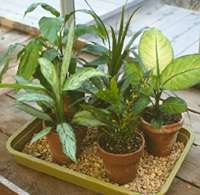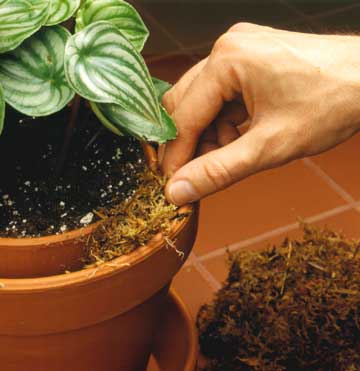





Homes with central heating are dry during fall and winter. The same is true in summer of houses where the air conditioner runs a lot. Cacti and succulents thrive in dry conditions, but most plants don't. Either you grow plants that like or tolerate dryness, or you raise the humidity in your home.
A humidifier is the simplest and most obvious solution. The added moisture benefits most houseplants. And it benefits furniture and people, too. If you don't want to buy a whole-house or room humidifier, try setting a small vaporizer near plants.
Grouping plants helps, too, because moisture released by one plant can be picked up by another. Keep in mind that despite their love for humidity, plants need good air circulation to ward off disease. Leaves of individual plants should not touch. This isn't always possible, but you should try to give each plant breathing room.
Finally, spray your plants frequently with a fine mist of tepid water. Mist both the tops and bottoms of leaves. Mist in the morning so that plants have a chance to dry during the day. Misting at night encourages disease. Besides increasing the humidity around plants, misting also helps deter some insects, especially red spider mites.
continue reading below Don't overwater; the roots
may rot.
Don't overwater; the roots
may rot.
Place an individual plant or group of plants on a tray of wet pebbles to raise the humidity around them. Fill the tray with water until the water's surface is just below the pot bottoms.
 This technique is called doublepotting.
This technique is called doublepotting.
You can raise the humidity, too, by placing a potted plant inside a larger pot. Fill the gap between the pots with sphagnum moss. Pour water over moss until it's moist.
Learn how to maintain the right moisture level in your houseplants with proper watering techniques.
Copyright © www.100flowers.win Botanic Garden All Rights Reserved